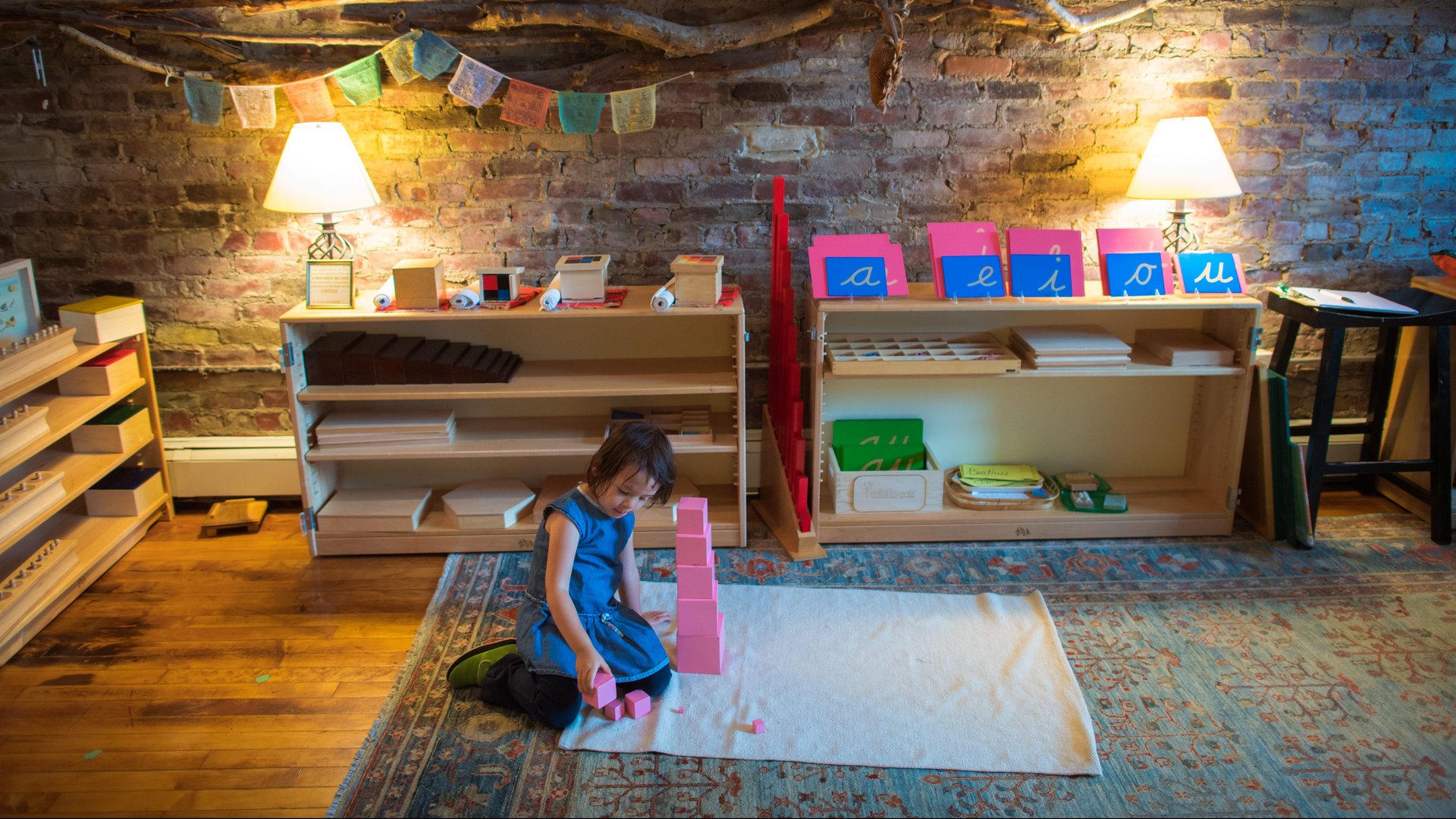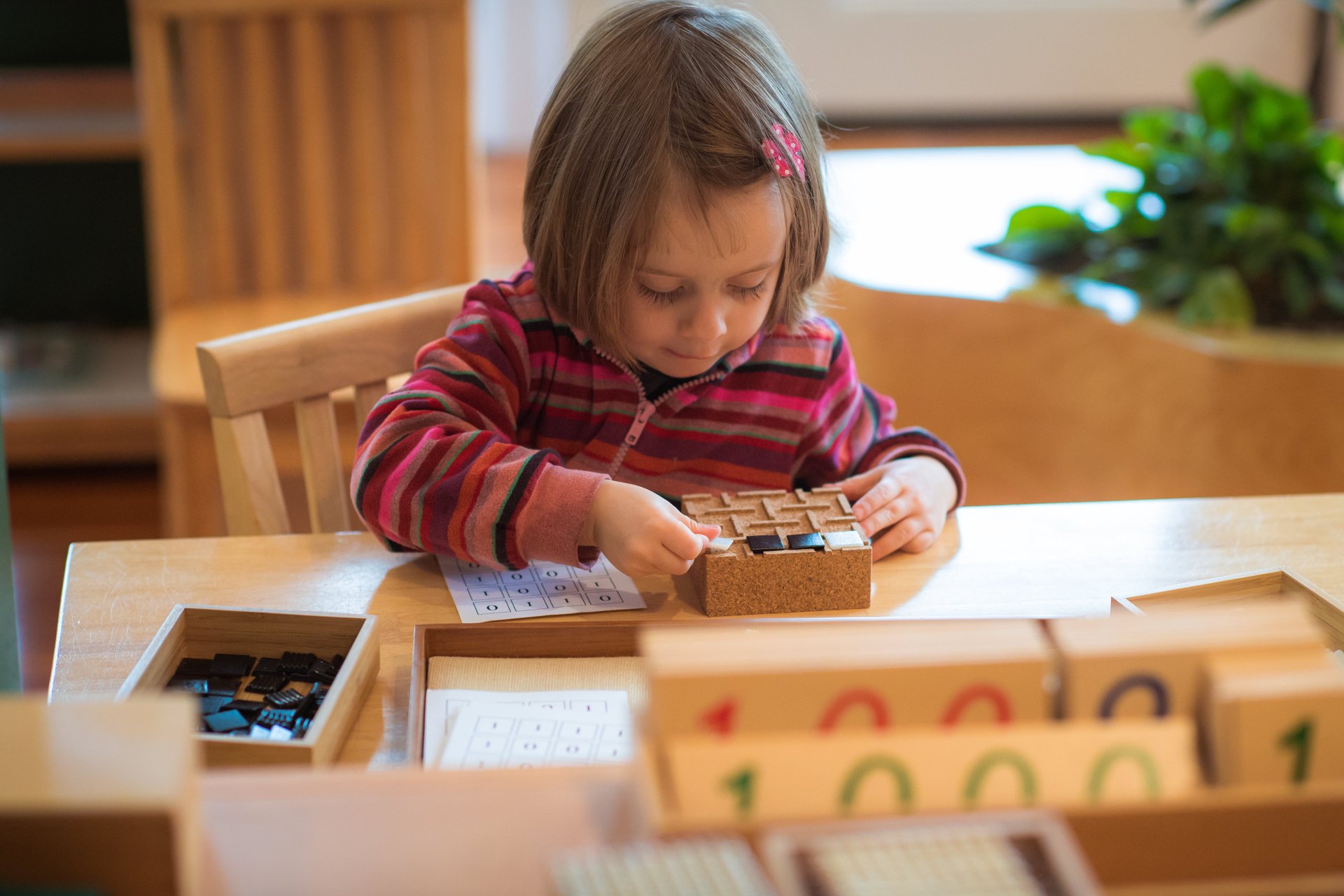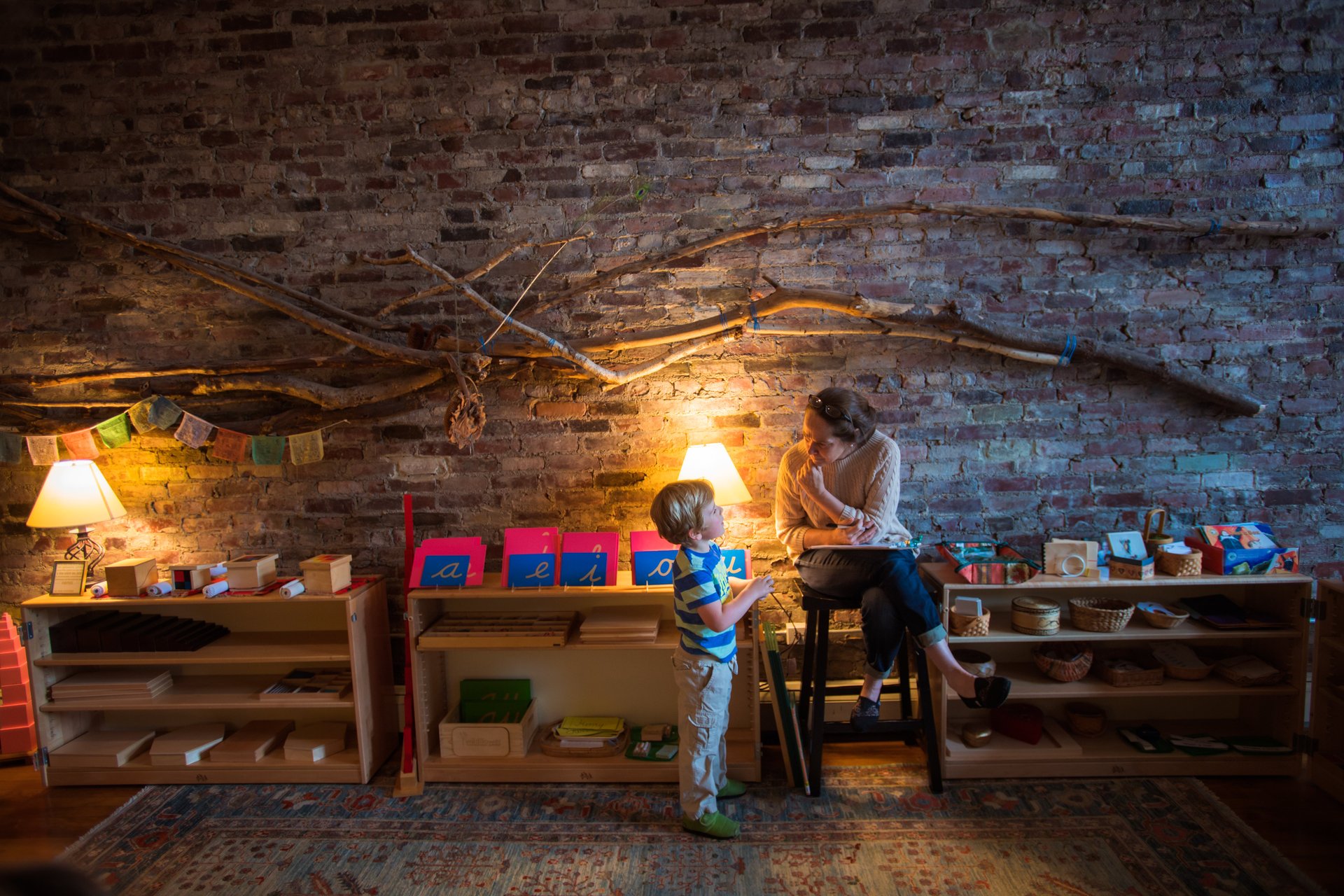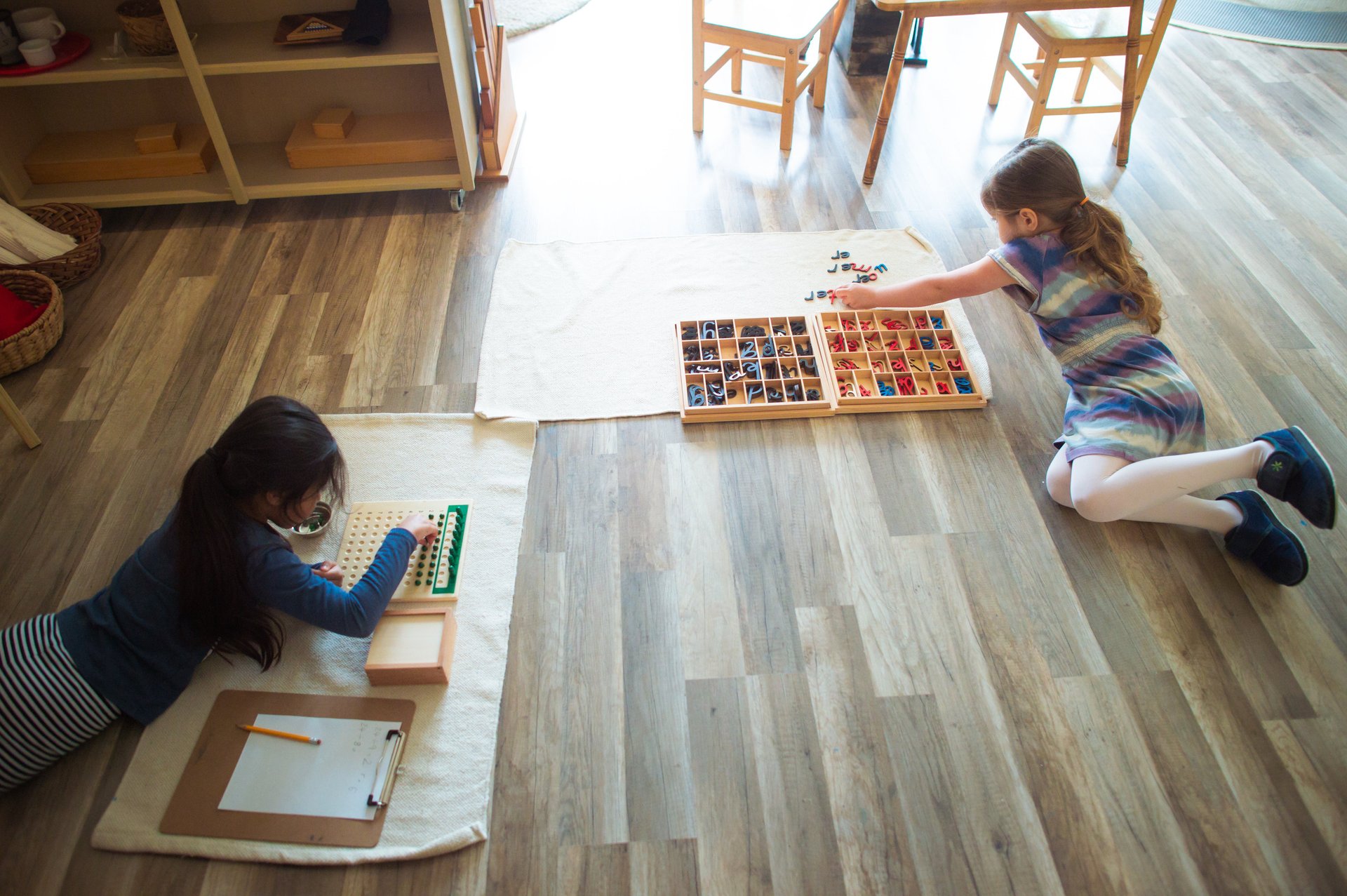The Montessori schools embracing kid-tracking devices
Schools spend billions of dollars on technology with promises of personalized learning and building 21st-century skills.


Schools spend billions of dollars on technology with promises of personalized learning and building 21st-century skills.
Wildflower Schools, a network of small, teacher-led Montessori schools founded in 2014, has a more radical idea: use sensors to track kids’ every movement—where they go, what they work with, who they interact with, and how long they engage with materials in the classroom.
It may sound creepy, and perhaps something that might make Maria Montessori roll over in her grave. But its backers say it’s an effort to make Montessori, an educational philosophy with passionate global backing, even more Montessori.
Montessori: the woman, the movement
Maria Montessori was an Italian physician, scientist, and educator who built an education movement in the early 20th century based on the radical notion that children are born curious and arrive ready to learn what they need to learn. It is not the role of educators to design abstract curricula and force children to absorb it, but to create an environment for them to explore and discover, which they are remarkably capable of doing. “It’s an education and grounded in the idea that the kids are all right,” says Matt Kramer, CEO of Wildflower, which counts 30 schools in its network across the US and Puerto Rico.
“Development is a natural path and our role as educators is to create a space and a system that encourages a natural course of development, as opposed to thinking of education as something unnatural that we’re doing to people” he explains.
Montessori loved children and observed them intensely, creating simple materials and tools to allow them to do the things they naturally want to do. At the schools that now bear her name, kids do stuff rather than listen to, and imitate, adults: math is approached through spatial learning, children trace letters as they say the letter sounds, and match cards with words to small objects.

Educators help guide the children’s “work” and create an environment for them to explore and discover independently. “Never help a child with a task at which he feels he can succeed,” Montessori said.
Schools vary widely in their adherence to Montessori’s materials and ideas, but some core principles include mixed-age classrooms, where younger kids learn from older ones and older ones learn by teaching; independent or small-group work that progresses at the pace each child wants; and teachers who stay with kids for multiple years. Unlike many early years classrooms, most Montessori classrooms do not have dress-up corners, Legos, or an abundance of circle time.
Teachers document everything: engagement, concentration, and interactions with other kids and materials. They track how students move through curricular sequences, like counting, addition, and multiplication. In other words, assessment is watching who kids are and how they are changing, not administering exams dictated by governments or testing companies.
It is this observation process that Wildflower hopes to amplify with sensors. Mary Rockett, a teacher-leader at the flagship Cambridge Wildflower campus, says the preparation of the environment and the choices for lessons are based on “the reality of the child you see in front of you, not a curriculum in front of you.” She has taught Montessori since 1984.
“That’s a lot when you are in charge of the administration and care of children aged three-to-six,” she says. (A key part of the Wildflower model is that they are led by teachers, not administrators.)
Kramer says Montessori practitioners have spent a long time honing what to look for in a classroom. “Montessorians have spent 100 years coming up with a protocol for data capture that they actually want to use, that they have refined how to use, and that they know contributes to healthy human development,” he says.
The hope is the sensors will help with this data collection and analysis, presenting teachers with a rich sense of what and whom a child is engaging with, and where teachers are dedicating their time (after the first pilot with sensors on kids, the teachers asked for their own sensors to understand how they spent their time in the classroom).
Montessori schools are having a renaissance: estimates vary, but the American Montessori Society says there are 5,000 in the US. Most of those are private, but the number of public Montessori schools has doubled since 2000, to about 500, according to the National Center for Montessori in the Public Sector. In 2018, Amazon founder Jeff Bezos announced he would invest $2 billion in Day 1 Academies, Montessori-influenced preschools for disadvantaged kids.

In 2017, Angeline Lillard, a professor of developmental psychology at the University of Virginia, did a study comparing educational outcomes of 141 preschoolers who were randomly chosen via lottery to attend either a Montessori preschool or a traditional preschool. When the kids started the study, there were no academic differences, but by the end of a three-year period, the Montessori kids had made more academic gains, had better social skills, and reported enjoying school more. The also had more “mastery” skills (the desire to learn), and took on challenging tasks in order to do so. One possible reason, Lillard says, is that there are few external rewards—such as grades, stickers, or gold stars—in Montessori programs.
Lillard says Montessori prepares kids well for a fast-changing world. “You are finding your own answers to things as opposed to trying to figure out what the teacher wants you to say,” she said. Her daughter explained it this way: “Once I got to regular school I knew what I needed to do to get an A and stopped, but in Montessori there was never any end to what you needed to do.”
Wildflower blooms
Wildflower was founded in 2014 when Sep Kamvar, a technologist and professor at MIT’s Media Lab, needed a school for his son. Unimpressed by what he saw, he collected a group of committed Montessorians and built a model for a new one that morphed into a model for many. Core principles included keeping them small, or “micro”; weaving them into the fabric of cities, typically in storefronts and along busy streets; and merging the role of teacher and administrator.
Wildflower’s 30 schools stretch from Minnesota and Puerto Rico to Cambridge, Massachusetts, where it all began. Wildflower has raised $26.5 million, including funds from the Chan Zuckerberg Initiative, the Walton Family Foundation, and the Omidyar Network. While it started as a private school, it has since expanded to include a network that includes public, private, and charter schools. In 2019-2020, 27% of Wildflower’s 570 students were low-income and qualified for free and reduced-price lunches.
For all the independence afforded Montessori kids, Montessori classrooms tend to be very calm places; advocates would say that’s because the kids are doing what they want, with just the right amount of guidance. There are plenty of “rules,” but they are designed from the perspective of what children need, not what adults want.
“If we care about a child deeply understanding something worth learning, the least influential person is the formal authority in the room and the least influential way to get them to digest something is to tell him to do it,” Kramer explains.

Teachers have a number of ways to avoid this: when a child is struggling, they explicitly don’t tell the child what to do. They might suggest working with another child, for example, who would explain it differently than an adult (teachers in non-Montessori also do this). They treat a child’s decision-making process as a core part of learning.
But this level of personalization—without tech, it should be noted—is no small task. A child who is impulsive and has no concentration one day becomes hyper-focused when presented with something he loves, or a peer with whom he enjoys working. Even with thorough observations, it’s tricky to get a full picture of every child every day, and harder still over the years.
“To gather information over time and to organize information over time has been a big challenge for me as a teacher,” Rockett says. “When I talk to others, the solution to this has not yet been found. I have great hope in the sensors.”
The Wildflower Foundation (a nonprofit) has spent about $4 million, which it raised externally, to build the system of sensors and cameras. The technology has been piloted in four Wildflower classrooms, all in Cambridge.
The technology has had its share of problems. In the first year the battery life was low, and uploading the data from the sensors was time-consuming for teachers. That’s improved, but then it was clear the sensors struggled to know if a child was interacting with material or just near it; incorporating computer-processed video now clarifies whether a child is oriented toward the material and engaging with it.
The developers have also tried to address privacy concerns. The computers take the video and turn the children into anonymous stick figures, essentially, and register their sensor number. Separately, Wildflower’s learning management system matches those sensor numbers with a teacher’s roster so that teachers can use the data. The data is encrypted on a password-protected server and access is restricted to the teachers and the development team.
Rockett said a key concern was simply the safety of having kids wear the devices. A spokesman for the technology company said the radio signals are “orders of magnitude weaker than a cell phone or a wifi signal, akin to a Fitbit.”
Could the sensors create a kind of moral hazard, allowing teachers to ease up on their own observations because they can rely on technology? Rockett says the sensors don’t replace the need for teachers to observe their kids, but reduce the paperwork associated with it. In an ideal world, the data help the teacher make sure the child is exploring the full range of activities and also that the teacher is dividing his or her time well across the class. That could make the sensor-filled Montessori classrooms even more effective in honing Montessori practices.
Lillard, the developmental psychologist at UVA, says she hopes the sensors can help pick apart what delivers the social, emotional, and academic gains Montessori kids often show in research. “We can zero in on whether particular advances in understanding are tied to more use of particular materials, gathering data in an unobtrusive way on a large scale,” she says. “They hold great promise as a research tool.”
One question she is investigating is whether tech can reliably infer concentration levels (as a human would observe them) from physical details of the child’s interactions (like sustained touching or looking at a piece of material). Initial findings show that simple physical details about the child’s interaction with material are highly correlated with an observer’s judgment about overall concentration levels.
For now, though, the Wildflower project is more hope than reality. As for what Montessori herself might have thought about the experiment? Maybe she would have been impressed with the precision of the undertaking. Or maybe she would have had faith in humans—kids and adults alike—to figure out what to do on their own.